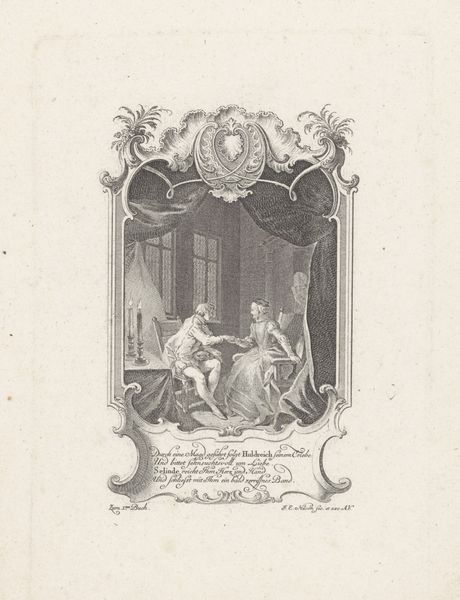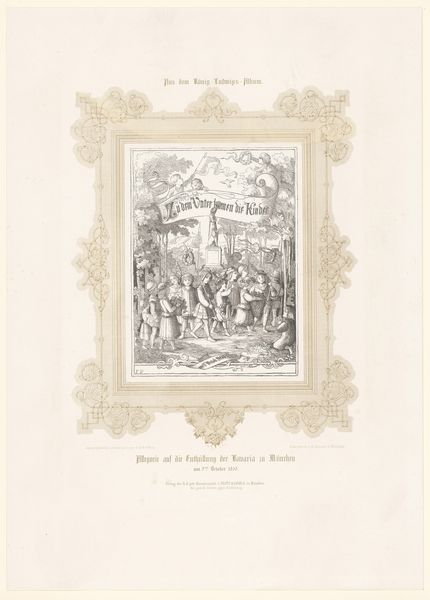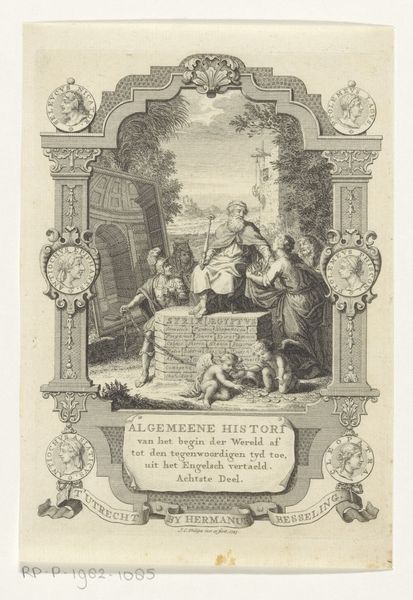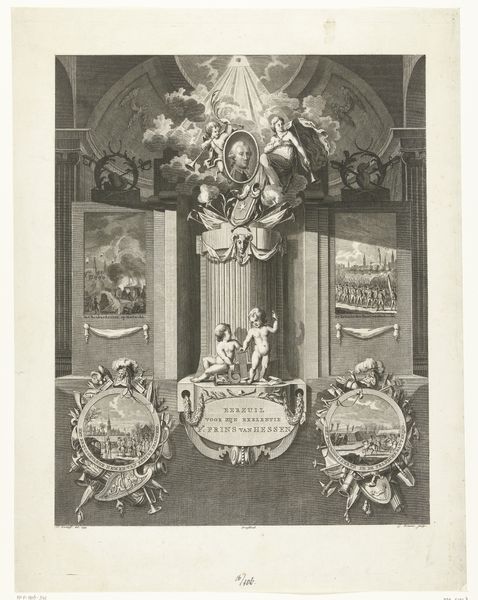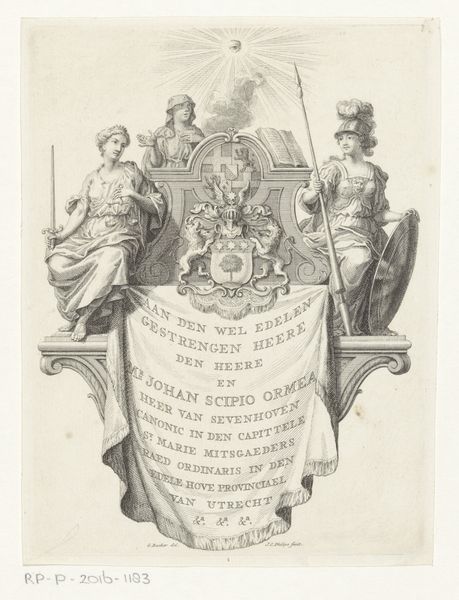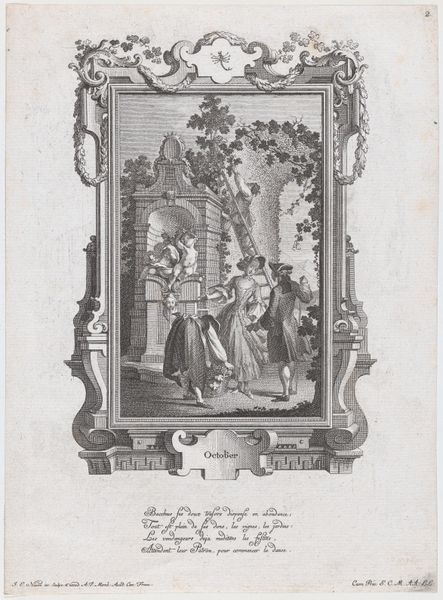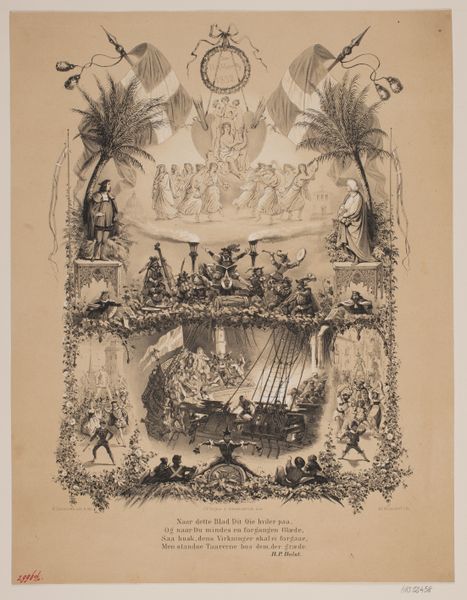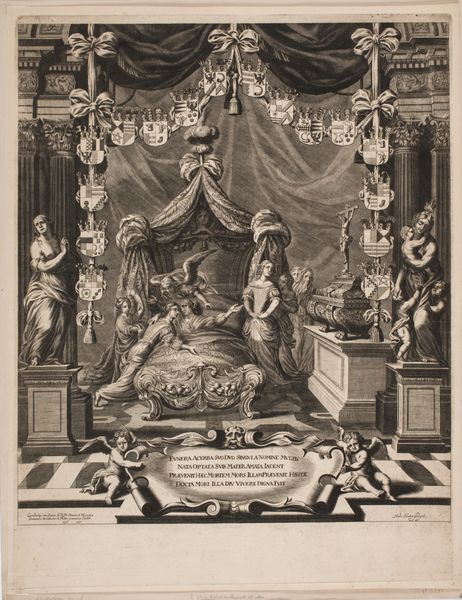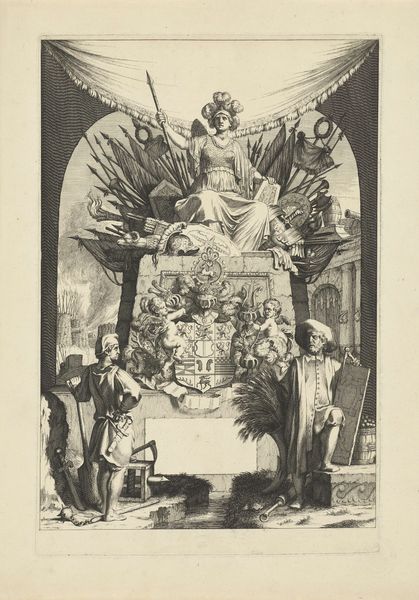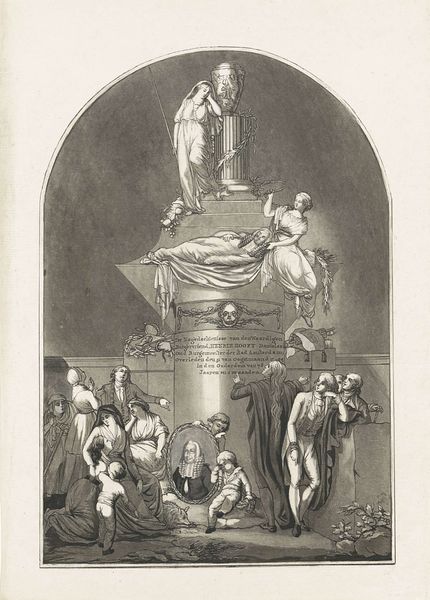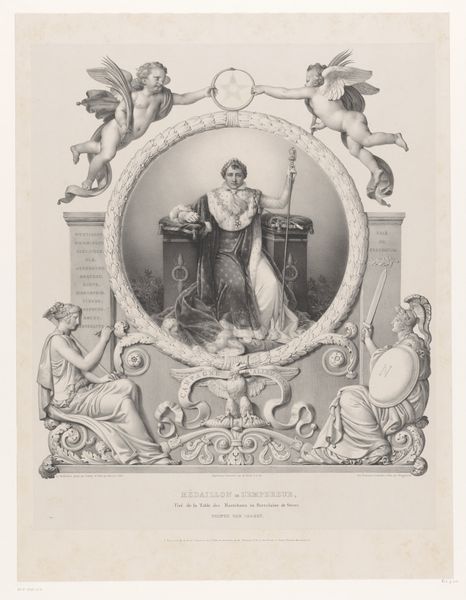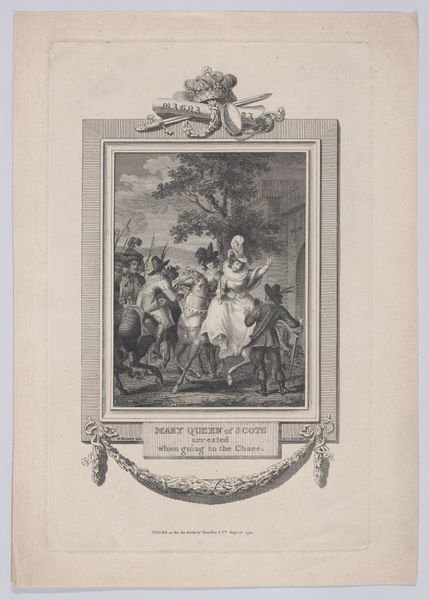
graphic-art, print, poster, engraving
#
graphic-art
#
light pencil work
#
allegory
# print
#
pen illustration
#
pen sketch
#
pencil sketch
#
personal sketchbook
#
ink drawing experimentation
#
pen-ink sketch
#
pen work
#
sketchbook drawing
#
history-painting
#
academic-art
#
poster
#
sketchbook art
#
engraving
Dimensions: height 610 mm, width 441 mm
Copyright: Rijks Museum: Open Domain
Curator: Here we have a poster designed to promote the Internationale Tentoonstelling te Amsterdam in 1883. It's an engraving. What strikes you most about this print? Editor: Well, immediately, it's the density of detail that stands out. It’s so ornate and, honestly, a bit overwhelming. The composition seems quite busy with those figures set against a backdrop bursting with decorative items. It reflects a very specific aesthetic, doesn’t it? A sort of proud grandeur meant to impress. Curator: Precisely. We can appreciate how the design emphasizes materiality—the poster itself, the engraver’s skill, and the sheer volume of objects that Amsterdam presented to the world. The allegory here represents abundance, achievement, and consumerism inherent within these international exhibitions. Editor: Absolutely, I read the allegory immediately as reinforcing established power dynamics. Note the presence of those classical figures, and angels alongside objects. These kinds of depictions often obscure the labor and social inequities that powered such exhibitions. Who benefitted, and who was excluded from the 'progress' being celebrated here? Curator: Good point. Consider that the physical creation of the exhibition itself involved tremendous manual labor: construction of the pavilions, transportation of goods, not to mention the artists and manufacturers working to produce items of display. This is often hidden beneath the veneer of art. We can analyze the materials employed—the paper, ink, the printing press technology. All revealing factors of the production era. Editor: It definitely begs the question of access and visibility. International exhibitions frequently showcased colonial acquisitions. It becomes crucial to unpack the context behind them. Were items obtained equitably? Does their presence perpetuate certain narratives about the countries they originated from? What stories were excluded from the frame? Curator: I find that framing the poster as an industrial product, showcasing skills of graphic reproduction while celebrating consumer goods, is insightful to think about its cultural value and how those items of the past might echo within a gallery of modern consumer items. Editor: Reflecting on the print’s original function as promotional material, it seems crucial that we investigate what messages are inherent in art forms to reveal these larger historical and societal power structures and hidden assumptions, even if these were unacknowledged. It becomes necessary to think about not only how artworks reflected historical times but how those periods were socially produced.
Comments
No comments
Be the first to comment and join the conversation on the ultimate creative platform.


